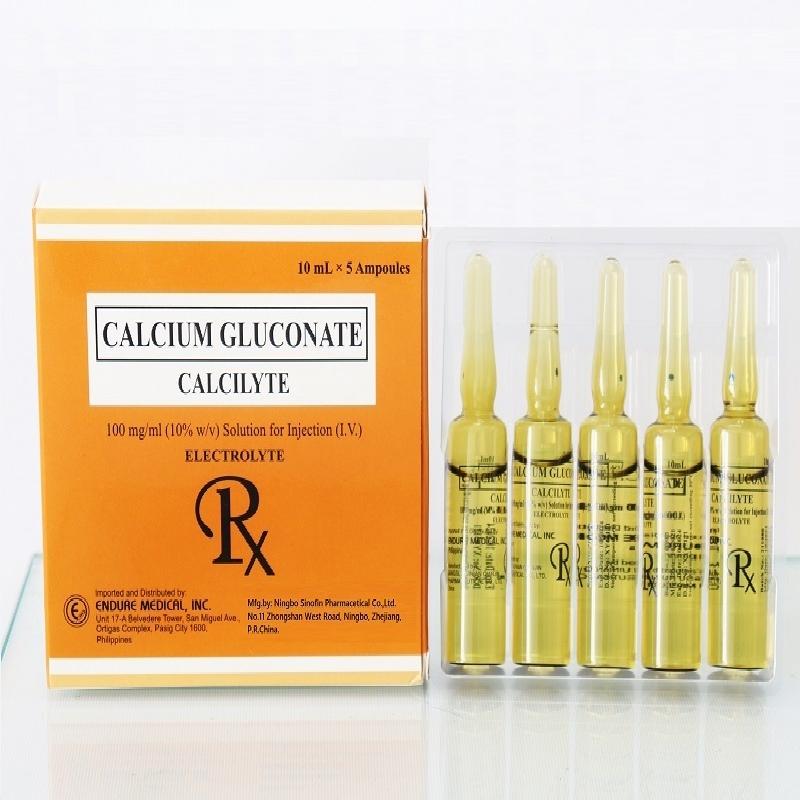-
Categories
-
Pharmaceutical Intermediates
-
Active Pharmaceutical Ingredients
-
Food Additives
- Industrial Coatings
- Agrochemicals
- Dyes and Pigments
- Surfactant
- Flavors and Fragrances
- Chemical Reagents
- Catalyst and Auxiliary
- Natural Products
- Inorganic Chemistry
-
Organic Chemistry
-
Biochemical Engineering
- Analytical Chemistry
-
Cosmetic Ingredient
- Water Treatment Chemical
-
Pharmaceutical Intermediates
Promotion
ECHEMI Mall
Wholesale
Weekly Price
Exhibition
News
-
Trade Service
CD19-CAR-T
CD19-CAR-T has changed the treatment landscape for relapsed/refractory large B-cell tumor lymphoma (r/r LBCL) to an unprecedented 70% high response rate, yet 60% of patients will eventually relapse or progress
after CD19-CAR-T treatment 。 In this case, Polatuzumab, tafasitamab, celiniso, and loncastuximab have been approved by the FDA, while immune checkpoint inhibitors, lenalidomide, bispecific antibodies, investigational CAR-T products, and allogeneic hematopoietic cell transplantation, and salvage chemotherapy are additional options
.
The problem is that it is unclear how these treatments should be used after CAR-T exposure
.
Small studies have reported experience in treating relapse after CAR-T cell therapy, but treatment strategies vary
.
In order to report the characteristics and outcomes of LBCL patients with relapsed or progression after CD19-CAR-T therapy, to analyze remission and overall survival of first-line interventions after CAR-T therapy, to identify risk factors for adverse outcomes, and to develop a stratified model of mortality risk in patients treated after CAR-T therapy, Memorial Sloan Kettering Cancer Center Miguel-Angel Perales and Roni Shouval et al.
conducted a retrospective observational analysis, A total of 305 patients with LBCL treated with CD19-CAR-T were enrolled in the two centers, of which 182 had disease recurrence or progression and 135 had received follow-up anti-cancer therapy
.
The results of the study were recently published in Leukemia
.
Study design
The authors' retrospective analysis included adult (age ≥18 years) r/r LBCL patients (Figure 1A) who received CD19 CAR-T cell therapy at Memorial Sloan Kettering Cancer Center (MSKCC) and Sheba Medical Center (Israel) between April 2016 and May 2021 (Figure 1A), CD19-CAR-T products including: axicabtagene ciloleucel (axi-cel), tisagenlecleucel ( tisa-cel), lisocabtagene maraleucel (liso-cel) or POC CD28-based products (NCT02772198).
Study results
Patient characteristics and outcomes
A total of 305 patients (Table 1) at both centers received CD19-CAR-T (axi-cel [n = 116, 38%]; tisa-cel [n= 83,27%]; lisocel [n= 28,9%]; POC-CAR-T [n= 78,26%]), with a median age of 63 years, the predominant histologic subtype of LBCL is non-specific diffuse large B-cell lymphoma (n = 236,77%)
。 Most (211,69%) had previously received ≥ 3rd line therapy, 125 patients (41%) received > 3rd line therapy, most were stage III–IV (216.
71%), and 134 (44%) and 43 (14%) had primary refractory disease and large mass tumors (the presence of any single mass > 10 cm in diameter),
respectively.
Grade CRS and ICANS of any grade occurred in 76% and 32% of patients, respectively, and severe (grade ≥2) CRS and ICANS
, respectively.
Most patients respond to CAR-T therapy (optimal ORR 67% of which 48% CR, 19% PR).
CAR-T product-specific toxicity and mitigation are shown in the table below
.
At a median follow-up of 20 months, OS and EFS rates at 1 year after CAR-T were 62% and 29%, respectively (Figure 1B), and the cumulative recurrence or progression rate at 1 year was 63% (Figure 1C).
Predictors of EFS after CAR-T
The authors screened candidate predictors
in univariate analysis.
Subjects meeting the P<0.
1 significance criteria were introduced into a multivariate Cox regression model (Table 2).
The results showed that non-germinal central lymphoma (HR = 1.
43; P = 0.
026), primary refractory disease before apheresis (HR = 1.
64; P = 0.
003), elevated LDH before CAR-T (HR= 1.
89; P< 0.
001), and active disease during CAR-T infusion (PR HR= 1.
90, SD/PD HR= 3.
32; overall P = 0.
012) were negative factors of EFS.
In addition to these traditional risk factors, Tisa-cel also had a higher risk of treatment failure than axi-cel (HR = 2.
03; P = 0.
005).
Features of the disease in the event of failure of CAR-T therapy
Of the 182 patients with recurrent or persistent disease after CAR-T, 51% had CAR-T refractory disease and 49% initially responded to CAR-T but subsequently relapsed
.
Tissue biopsies were performed in 77 patients to confirm disease persistence or recurrence
.
Since antigen escape is a potential mechanism of CAR-T resistance, the authors evaluated CD19 expression
in 52 tumor biopsy tissues.
Interestingly, CD19 expression (Figure 2A) was only missing in 3/52 (6%), while the rest of the sample was dim (14/52, 27%) or normal (35/52, 67%) expression
.
The authors compared baseline characteristics of patients refractory to CAR-T with those who relapsed to identify features that may be relevant to the type of CAR-T treatment failure (Figure 2B).
It was found that primary refractory disease before apheresis was the only pre-CAR-T factor that differed between groups: the percentage was higher in CAR-T refractory populations (58% vs.
36%, P = 0.
003, see red box in Figure 2B).
To further clarify the difference between the patterns of response to CAR-T between the two diseases (refractory vs.
relapse), the authors investigated additional variables
after CAR-T infusion.
Patients in the refractory group were more likely to develop new sites of disease involvement on disease evaluation compared with the relapsed group (14% vs.
30%, P = 0.
017).
CD19 expression at disease progression in CAR-T-resistant patients is similar to that in patients with disease relapse, regardless of the expression class considered (deletion/dim/normal; P = 0.
88) or the MFI ratio (relative to the reference value) as a continuous covariate (P = 0.
60).
Overall, the results of this study suggest that both drug resistance and relapse are common patterns of CAR-T treatment failure, and better biomarkers are needed to describe the biological differences
between them.
Treatment after CAR-T therapy failure
Of the 182 patients with relapse or stabilization/progression after CAR-T, 135 (74%; Figure 1A) Subsequent anti-cancer therapy after CAR-T infusion, median time after CAR-T infusion was 83 days
.
Most patients (75/135, 56%) were treated for disease recurrence after remission of CAR-T (CR 32%, PR 24%); The remaining patients (60/135, 44%) were treated
for unresolved CAR-T.
Among patients receiving further treatment after failure of CAR-T therapy, the overall response rate was 39% (CR 20%; PR 19%)
。 The median time from CAR-T to next-line therapy in patients with disease progression or stabilization after CAR-T is shorter than in patients who initially respond and then relapse (50 days vs.
123 days, p< 0.
001).
The median follow-up time from the start of first-line therapy after CAR-T was 15 months, and the median OS and EFS after treatment were 8.
5 and 1.
9 months, respectively (Figure 3A), and these adverse outcomes underscore the urgent need to improve the current
status of treatment in patients requiring anticancer therapy after CAR-T.
First-line therapy after CAR-T uses up to 30 different treatment strategies, grouped by major drug class or drug in the table below
.
The main treatment classes (Figure 3B) included polatuzumab-based (n = 29), chemotherapy (n = 17; anthracyclines or platinum-based), lenalidomide-based (n = 15), radiation therapy at the affected site (ISRT) alone (n = 15), and BTK inhibitor-based (BTKi; n= 14)
。 Treatment allocation is at the discretion of the treating physician and varies from site to site; Local disease is mainly given ISRT alone (Figure 3C).
There were meaningful differences in patient characteristics between treatment strategies: more aggressive disease features in the chemotherapy group, such as large mass disease, primary refractory disease before apheresis, and lower response rates to CAR-T; Patients treated with lenalidomide were older, had more treatment lines, had better CAR-T response, and had lower pre-treatment LDH (i.
e.
, pre-administration of post-CAR-T therapy) compared with other treatment groups; Patients receiving polatuzumab and BTKi as the underlying strategy are typically < 60 years of age, with more than 70% of patients having elevated
LDH before treatment.
CR rates with systemic therapy range from 0% for chemotherapy to more than 30% since natdomide and polatuzumab-based (Figure 3D).
One-year survival after treatment with the most common systemic therapy strategies ranged from 21% for BTKi and 25% for chemotherapy versus 69% for lenalidomide-based therapy (Figure 3E
).
Polatuzumab-based strategies achieved an ORR of 48% (CR n= 10/29 [34%], PR n= 4/29 [14%]), but response did not translate into OS prolongation 1 year after treatment (37%)
.
Considering differences in OS rates after treatment, the authors performed exploratory analyses to compare major treatment strategies
.
In a multivariate Cox regression model that stratified by center and corrected for underlying drivers of treatment choice, including age, treatment-time LDH, and previous CAR-T response, lenalidomide-based therapy was associated with post-treatment OS improvement compared with standard chemotherapy (HR = 0.
25, P = 0.
027).
Suggests that new drugs can induce remission
after failure of CAR-T therapy.
Risk stratification system after CAR-T
Given the poor outcomes after first-line treatment following CAR-T treatment failure, the authors sought to identify key predictors of mortality at this time, investigating the correlation
between disease, patient, and treatment-related features and post-treatment OS in univariate and multivariate Cox regression models 。 In univariate analysis, advanced age (> 65 years), larger lesion volume at apheresis, elevated LDH before treatment, shorter time between CAR-T and treatment (< 100 days), late stage of disease at treatment, and refractory CAR-T were candidate predictors of shorter OS after treatment (Table 3).
A multivariate Cox model for first-line treatment of OS after CAR-T failure, including candidate predictors, confirmed independent associations
in large mass disease (HR = 2.
27), older age (HR = 2.
65), elevated LDH (HR = 2.
95), and CAR-T refractory (HR = 2.
33).
。 To stratify the risk of death in these patients, the authors proposed a prognostic system that included these four factors (preapheresis macromass disease, CAR-T refractory, age > 65 years, and pretreatment LDH), divided into 0-1 factors and ≥2 factors, with 1-year survival rates of 56% and 19%, respectively (Figure 3F).
conclusion
This study fills the knowledge gap
related to outcomes and subsequent treatment in patients who failed CAR-T therapy with data from 182 patients with LBCL who received CD19-CAR-T therapy.
This study also reflects the discouraging consequences of the persistence of post-CAR-T lymphoma and highlights the unmet needs
that remain.
Nevertheless, new drugs can show activity after CART exposure and warrant further exploration
.
Finally, the authors propose a prognostic tool to identify patients at highest risk of early death after CAR-T, which may be useful in stratifying patients for future studies
after CAR-T.
References
Tomas AA,et al.
Outcomes of first therapy after CD19-CAR-T treatment failure in large B-cell lymphoma.
Leukemia .
2022 Nov 5.
doi: 10.
1038/s41375-022-01739-2.







